Are you looking to reap the benefits of cannabis by exploring different cannabinoids? Learn more about cannabidiolic acid, known as CBDA, how to harness the powerful properties of CBDA, and how to consume this cannabinoid acid through a CBDA tincture, raw cannabis, cannabis juice, and more.

Table of Contents
Article Features
- Just 2 ingredients needed: CBD flower & high-proof grain alcohol
- Can be used as a sublingual tincture or made into FECO
- Versatile and can be made with your favorite strain of CBD flower
- Need help getting started? Shop with me and have premium, high-quality CBD flowers delivered directly to your door! Now shipping across the US.
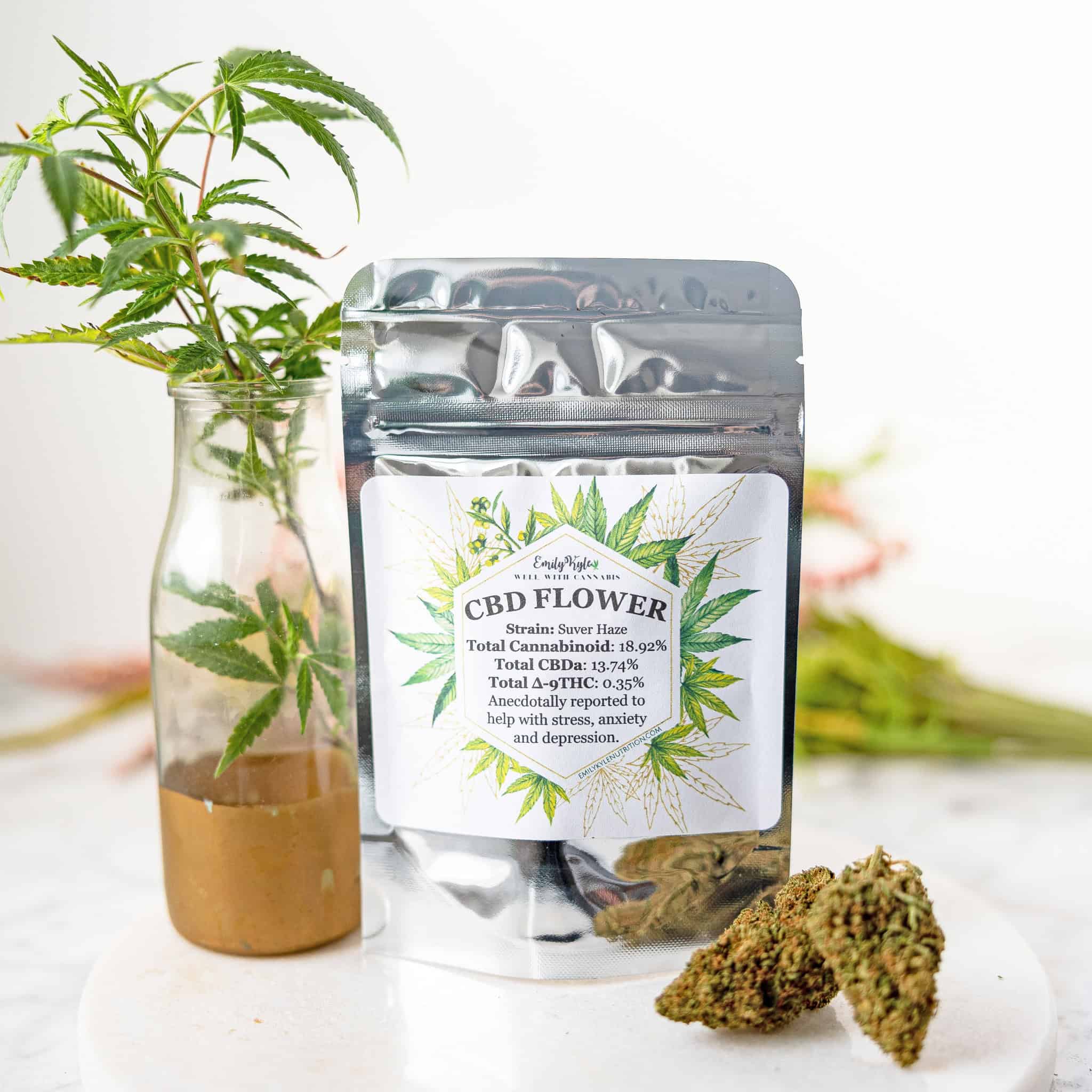
Why You Will Love This Guide
As I continue to learn more about the amazing cannabis plant, I get more and more excited about the benefits of the many different cannabinoid acids.
You may be familiar with the word cannabinoid, but cannabinoid acids may be a whole new concept.
You probably know the cannabinoids THC and CBD, but there are also cannabinoid acids called THCA and CBDA.
I’ve recently gotten a ton of questions from members inside my Well With Cannabis Community about the potential benefits of CBDA and how to use it in homemade food and personal products.
This post will explain what cannabidiolic acid, or CBDA, is, the potential health benefits of CBDA, and how you can consume CBDA by making a CBDA tincture or consuming raw cannabis.
What You’ll Need
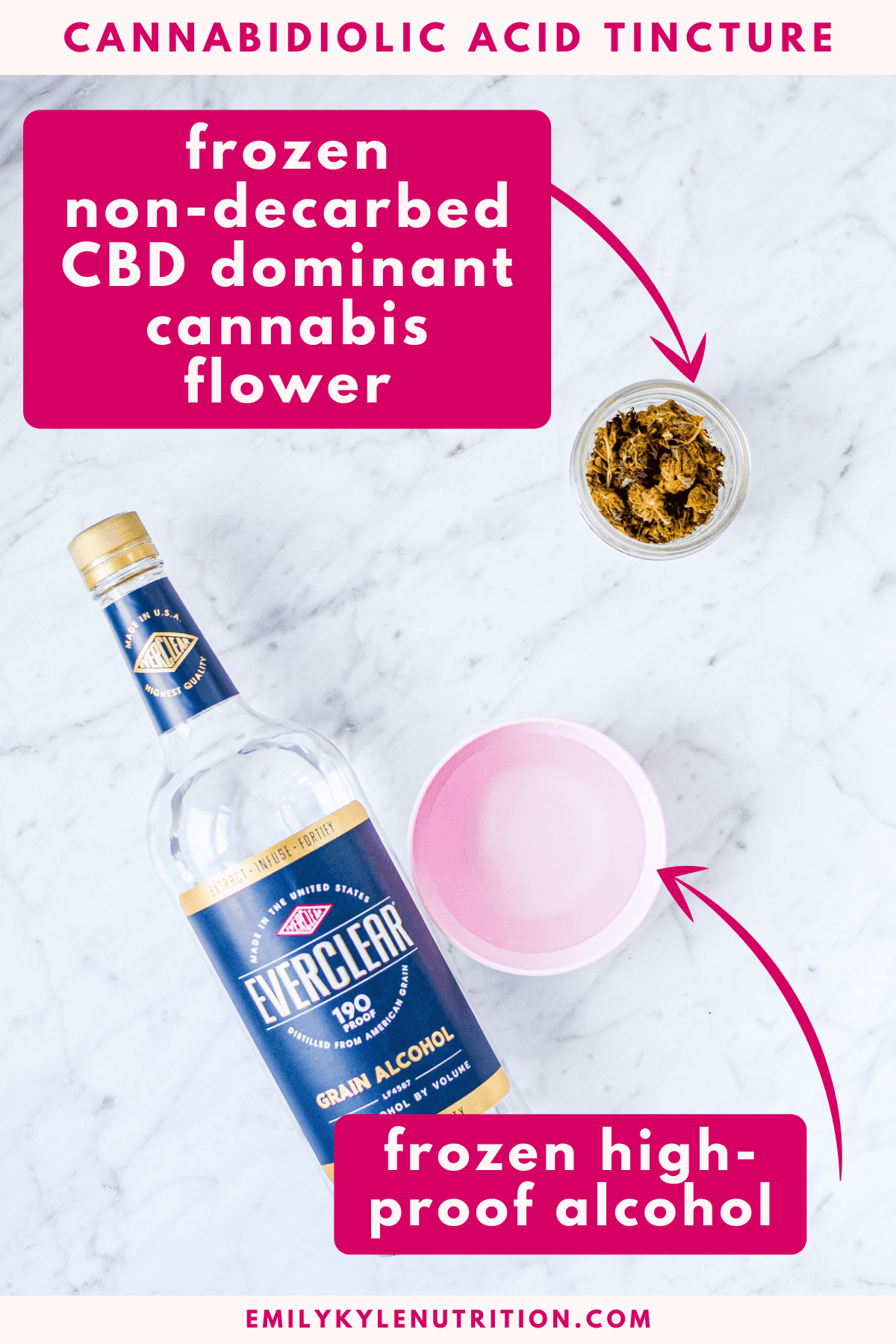
- CBD-dominant cannabis flower: You must start with a cannabis flower with CBDA already present. This comes from CBD-dominant cannabis flowers. You can purchase CBD flowers from my online shop. You will need your desired amount of flower, ranging from 1 gram up to 1 ounce or more. Do NOT decarb.
- High-proof alcohol: You need high-proof grain alcohol. You want at least 150 proof, but ideally 190 or 200 proof. Lower-proof alcohols, like vodka, are not ideal. Be sure to check out my guide for where you can order high-proof grain alcohol online and have it shipped to your door, or learn more about what to ask for when visiting your local liquor store.
Note: A complete list of ingredients with amounts and printable instructions is located in the recipe card below.
The Step-by-Step Process
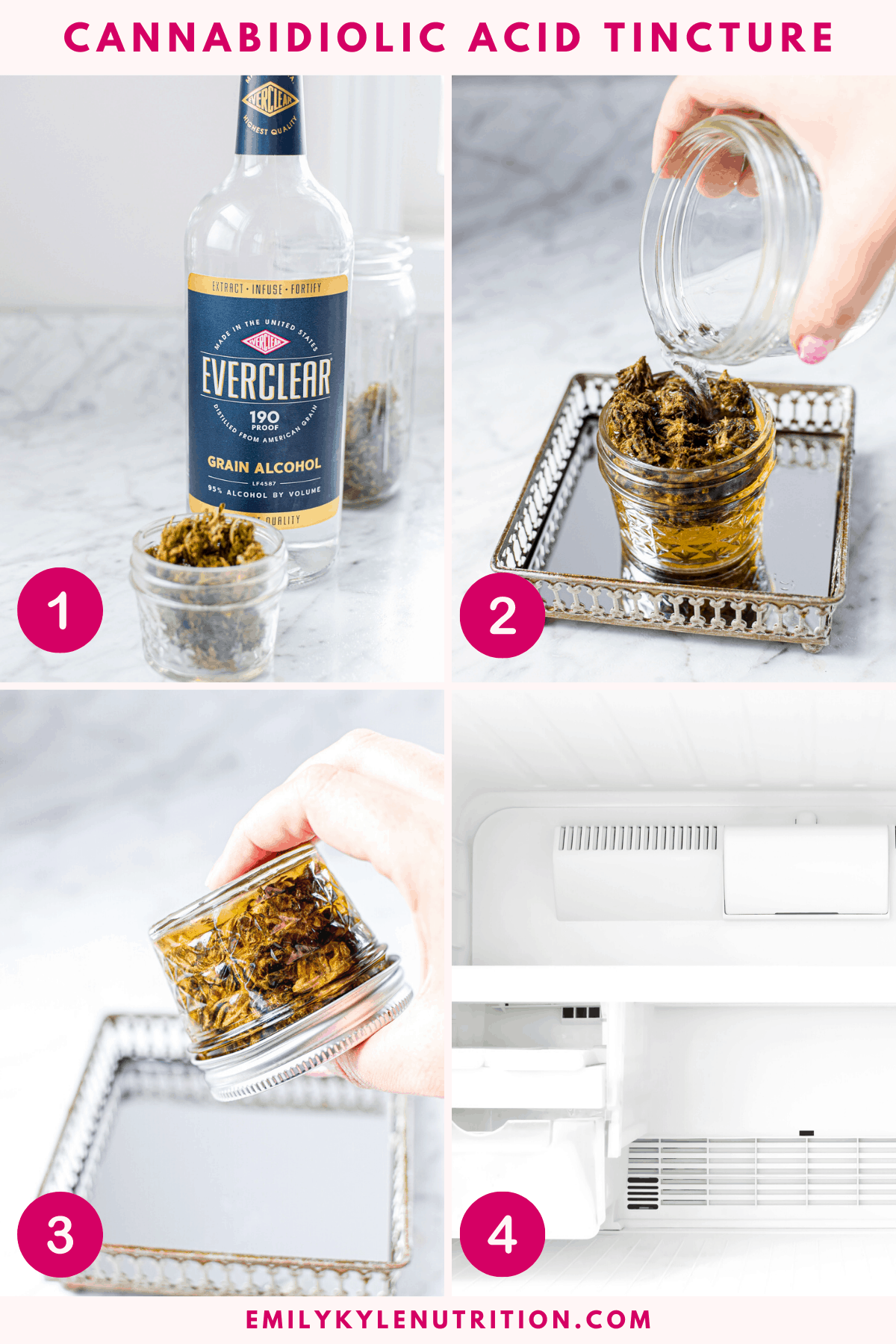
- Step 1 – Place the NON-decarbed CBD flower in a mason jar inside the freezer. Freeze overnight. Place the alcohol inside the freezer. Freeze overnight.
- Step 2 – When you’re ready to make your tincture, pour the cold alcohol over the frozen flower. Screw the lid on tightly.
- Step 3 – Gently invert the mason jar to shake – do not shake vigorously. Place back in the freezer for 5 minutes.
- Step 4 – Remove the jar from the freezer, shake gently, and place back in the freezer for 5 minutes.
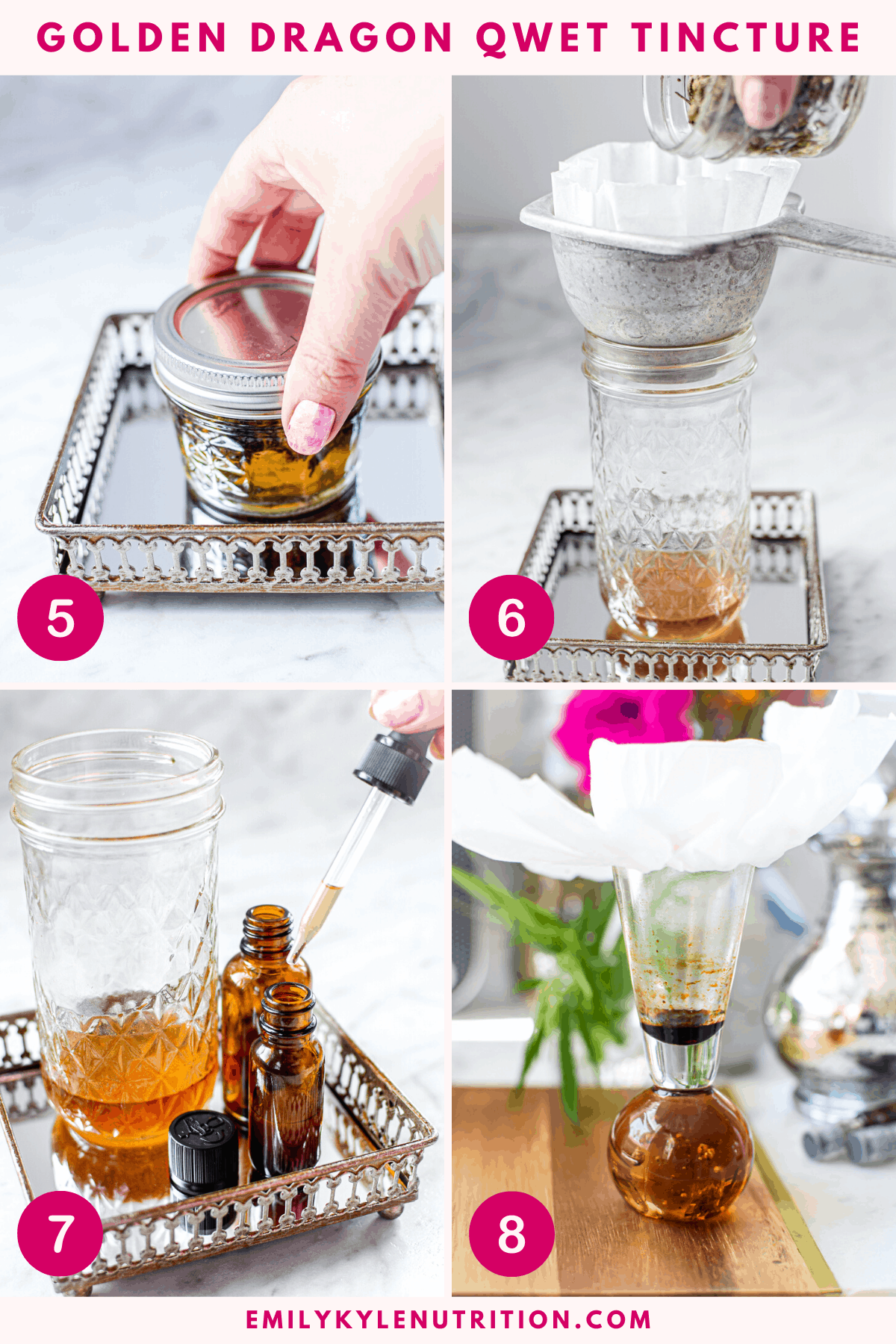
- Step 5 – Repeat the step above one more time for a total of 3 times.
- Step 6 – Remove from the freezer and strain the tincture through a filter. Repeat a second and third wash, if desired.
- Step 7 – Store in a dark jar, like this dropper bottle.
- Step 8 – Move on to evaporate the alcohol, if desired, but be sure to follow the no heat method to avoid converting the CBDA into CBD.
Note: complete step-by-step printable instructions are located in the recipe card below.
Storage Instructions
Store your tincture in glass, not plastic.
A dark jar, like this dropper bottle, is ideal, but clear glass is just fine if you store it in a cool, dark place like a cupboard or freezer.
Tinctures can be stored for up to several months or even longer.
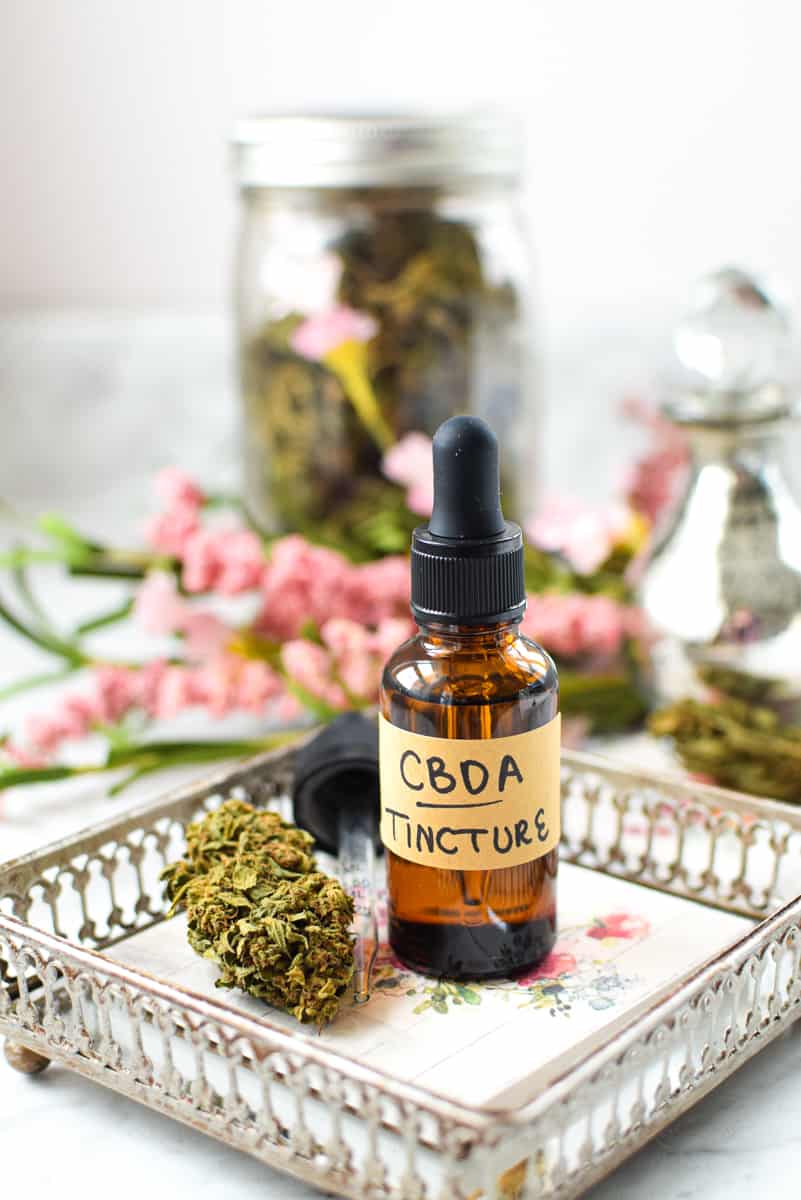
What Are Cannabinoid Acids?
If you understand the process of decarboxylation, you know that this is an important step in smoking, vaping, making edibles, topicals, and more.
Decarboxylation is the process that turns cannabinoid acids into their active cannabinoid forms. This process also gives us the ‘high’ associated with THC.
You likely are familiar with many different cannabinoids in their activated forms of THC, CBD, CBN, CBG, CBC, and more.
But before these cannabinoids were activated through decarboxylation, they started as acid precursors called cannabinoid acids.
These acids include THCA, CBDA, CBNA, CBGA, CBCA and are present in the trichomes of the plant.
The trichomes are most abundant in raw or dried cannabis buds or flowers and in varying levels on sugar or fan leaves.
THCA vs. CBDA
THCA or CBDA are the two most abundant cannabinoid acids in cannabis.
This post focuses specifically on the health benefits of CBDA extracted from CBD dominant cannabis strains.
Visit this article for a full overview of the health benefits of THCA, or tetrahydrocannabinolic acid.
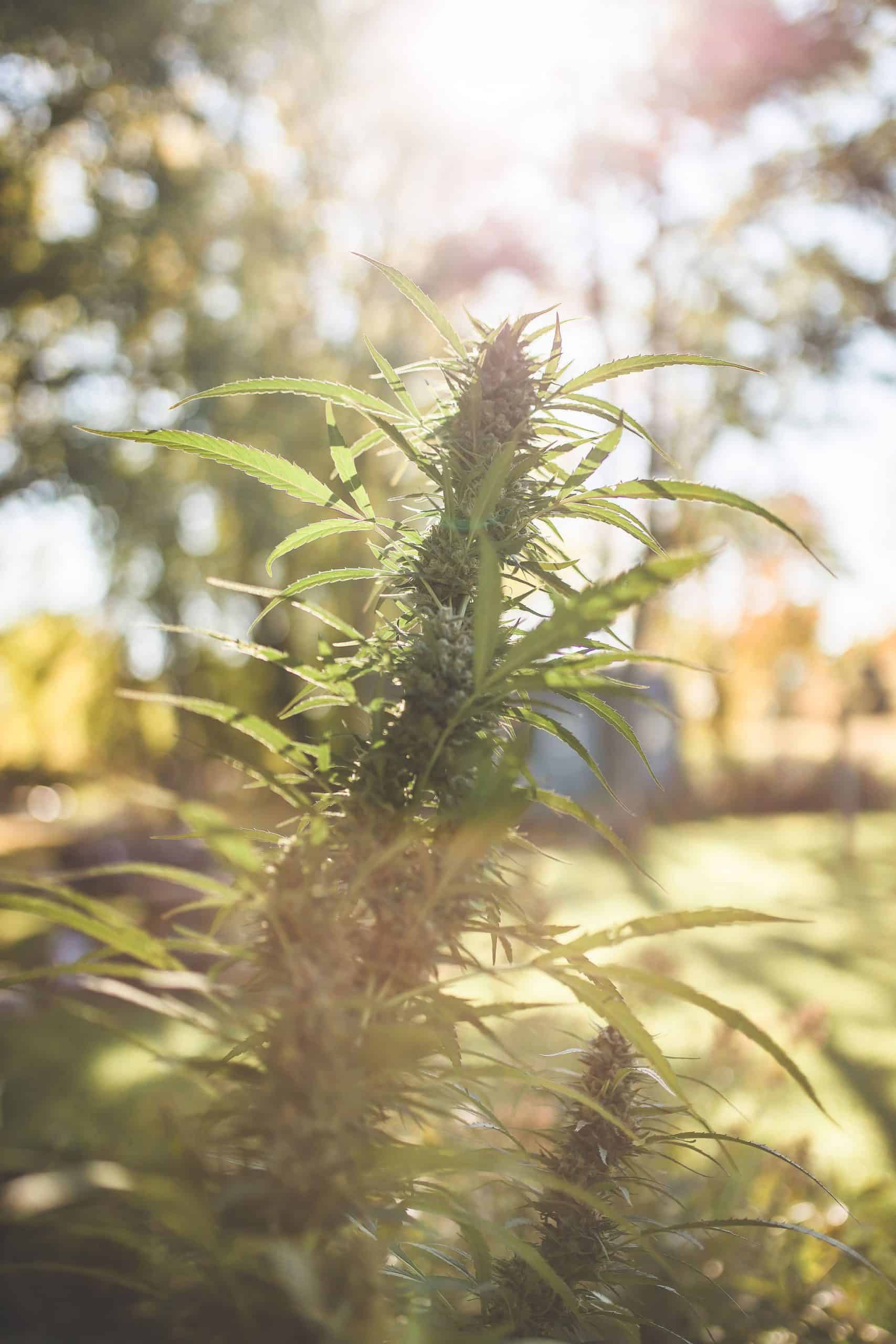
What is Cannabidiolic Acid (CBDA)?
CBDA is short for cannabidiolic acid. This is a cannabinoid acid found in the trichomes of raw or dried cannabis plants.
Trichomes are predominantly present in the buds and leaves.
CBDA comes from CBD-dominant cannabis and may, or may not, fall below the Federal legalization limit of 0.3% THC.
That makes accessing CBDA easy if you grow your own hemp or CBD-dominant cannabis plants at home.
Please check your local laws for regulations and legalities surrounding growing your own hemp and cannabis plants.
I grow these plants legally at my farm in New York as a licensed hemp farmer.
CBDA vs. CBD
You’re probably already familiar with CBD oil, whether it be purchased or you make your own CBD oil at home.
CBDA is what exists naturally in the plant before the decarboxylation process occurs.
Decarboxylation is the process that converts CBDA into CBD and THCA into THC, respectively.
CBDA that has been decarboxylated becomes CBD.
Both CBDA and CBD are non-intoxicating, meaning they do not produce a ‘high’ feeling.
But that doesn’t mean they are useless! Research suggests that CBDA has many potential health benefits.
What Are the Benefits of CBDA?
There is an exciting amount of preliminary evidence to support the idea that CBDA has many anti-nausea, anti-inflammatory, and pain-relieving properties.
SAVE THIS GUIDE 💌
CBDA for Nausea and Vomiting
One of the most common reasons I see members of my Well With Cannabis Community using CBDA for is to treat nausea and vomiting.
Using CBDA as a natural treatment of nausea and vomiting could be very beneficial in treating chemotherapy-induced nausea and vomiting, cyclic vomiting syndrome, and even potentially cannabis hyperemesis syndrome.
Thankfully, there is new emerging scientific evidence to support these anecdotal reports.
One study published in the British Journal of Pharmacology reported that CBDA shows promise as a natural treatment for nausea in rat studies.
This study also concludes that CBDA has shown even greater significance in the ability to inhibit vomiting (1).
CBDA For Pain & Inflammation
Many of my Well With Cannabis Community members also report that they use CBDA to manage pain.
These anecdotal reports can be supported by a study published in Drug Metabolism and Disposition.
This study suggests that CBDA contains a selective inhibitor for COX-2 activity.
Inhibiting COX-2 gives a similar response to using nonsteroidal anti-inflammatory drugs, or NSAIDS (2).
Therefore, CBDA could be a natural treatment for acute and chronic inflammation and a potential replacement for common over-the-counter pain relievers such as aspirin, ibuprofen, and more.
CBDA for Cancer
Another interesting benefit of CBDA is that research shows that it also has shown potential anti-tumor abilities.
As published in Toxicology Letters, CBDA may fight against the mutation of tumoral cells in breast cancer patients (3).
While more research is needed, this is a very promising option, as a quarter of a million women are diagnosed with breast cancer in America each year (4).
How to Consume CBDA
Like with all things cannabis, there are many ways you can consume CBDA.
To get the most benefits, you want to ensure that your preparation process does not involve heat, as heat can facilitate the decarboxylation process.
CBDA can be consumed through either raw, fresh cannabis, or dried and cured cannabis.
Raw Cannabis Leaves or Juice
CBDA can be consumed through eating raw, fresh cannabis flowers or leaves, like sugar leaves and even some fan leaves.
Like kale, spinach, and celery, raw cannabis is also nutritious and contains chlorophyll, like any other dark green leafy vegetable.
If you’re working with leaves, remember that it is essential to consume clean, raw cannabis.
Like any other lettuce or vegetable, raw cannabis has the potential to carry microbes such as salmonella and e. coli from their growing environment to the point of human consumption.
This is especially important for those who are immunocompromised.
This is still one of the best ways to consume CBDA through CBD-dominant plant leaves and flowers.
You can do this by adding raw leaves to salads, making cannabis pesto, making cannabis juice or adding the leaves to a smoothie.
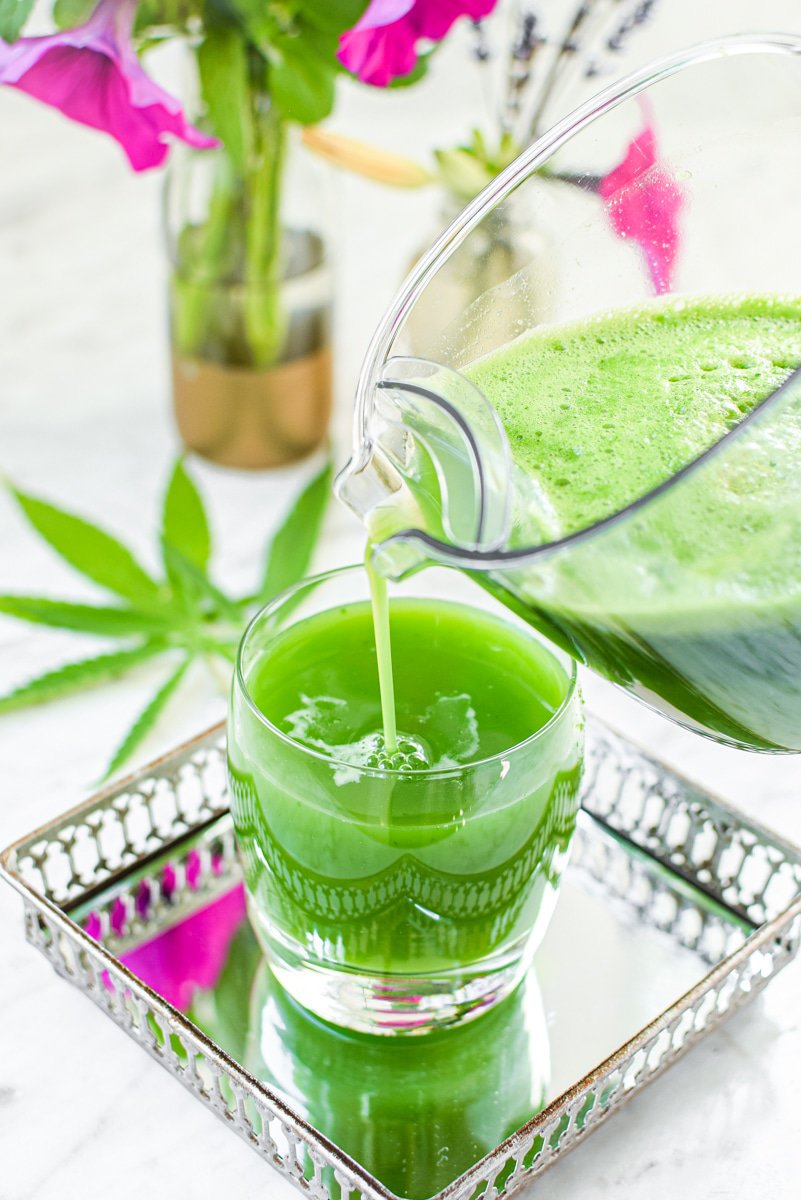
Dried Cannabis Buds or Kief
You can also harness the benefits of CBDA through traditional, dried CBD-dominant hemp, CBD cannabis flower, or CBD kief.
To keep the benefits of CBDA, you simply skip the entire process of decarboxylation all together. You can then extract the CBDA from the flower through the tincture making process.
Feel free to experiment for yourself with these different recipes to make a CBDA dominant product, be sure to start with CBD-dominant flower first and do not decarboxylate or introduce any heat.
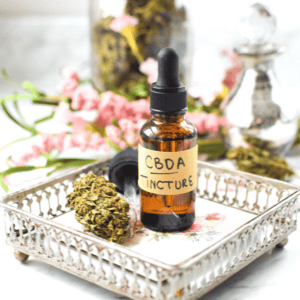
Cannabidiolic Acid (CBDA) Tincture
Ingredients
- 14 grams CBD cannabis flower NOT decarboxylated
- 8 ounces high-proof grain alcohol
Instructions
- Place the NON-decarboxylated cannabis in the freezer. Also place the high-proof alcohol in the freezer. Freeze overnight at a minimum, ideally 24 hours.
- When ready to prepare your tincture, place the frozen cannabis in a mason jar.
- Pour the cold alcohol into the jar. You only need to add enough alcohol to cover the cannabis completely*.
- Screw the lid on tightly and shake gently. Place the jar back in the freezer for 5 minutes.
- Remove the jar from the freezer, shake gently, and place it back in the freezer for 5 minutes.
- Repeat the above step one more time, for a total of 3 times.
- Remove the jar from the freezer one last time and strain. Pour the tincture through your preferred straining system, separating the plant-matter from the alcohol, into a clean mason jar. A coffee filter in a funnel works well here.
- You now have a golden QWET CBDA tincture. You can choose to evaporate off as much or as little alcohol as desired, however, ensure you are using a no-heat method.
- Store this tincture in a mason jar, amber-colored tincture jar, or other glass container. You can store at room temperature, in the refrigerator, or freezer. A tincture should last months, if not longer.
Notes
- You do not need to use the full 14 grams of cannabis called for in this recipe. You can use as much or as little cannabis as you want. For a small, starter batch, start with just 3.5 grams.
- Only use high-proof alcohol, the higher the better. Lower-proof alcohol, like vodka, is not ideal. Use this guide to finding high-proof alcohol, if needed.
- You do not need to use the full 8 ounces of alcohol, you just need enough to cover all of the cannabis in the container you are using. Anything more is a waste.
- If you want to make FECO, follow this guide for how to safely evaporate the alcohol from the tincture.
Nutrition
Where to Buy CBDA Products
If you want to make your own CBDA tincture using the instructions below, you’ll need material. I am proud to offer third-party, lab-tested CBD flowers for purchase in my shop.
If you don’t want to make your own CBDA tincture with the instructions below, CBDA is also available in a wide variety of products in my shop.
I am proud that many of my full-spectrum products are 3rd party lab-tested and verified to contain CBDA.
My best-selling CBD oil contains 10mg of CBDA, resulting in 0.3mg of CBDA in every 1mL serving and 16.6mg of CBD.
Shop Now
Shop with Emily
Shop Now: Sour Space Candy CBD Flower
Shop with Emily
Shop Now: CBD Wellness Gummies
Shop with Emily
Shop Now: CBD Revive Oil
Shop with Emily
Shop Now: Topical CBD Stick
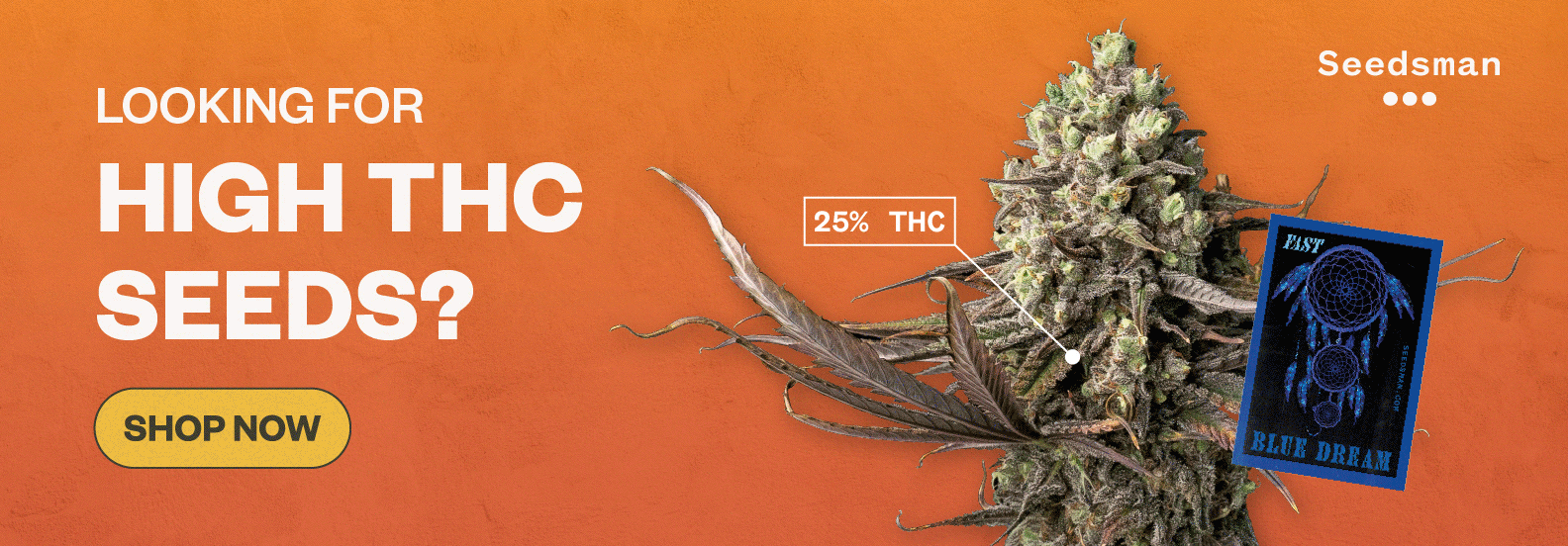

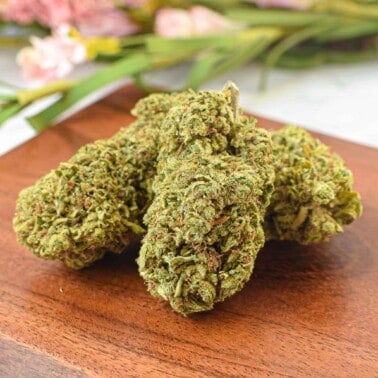
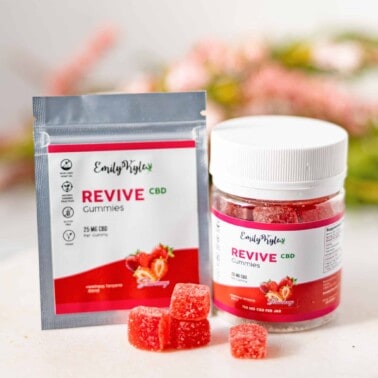
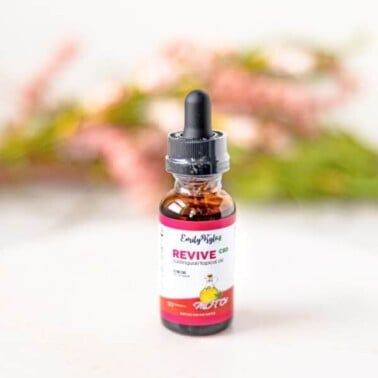
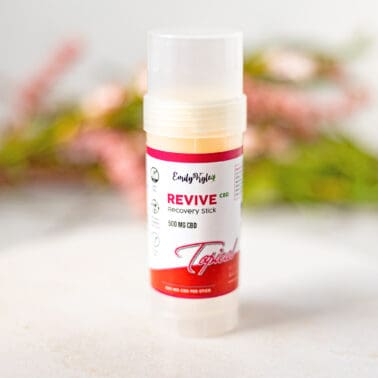
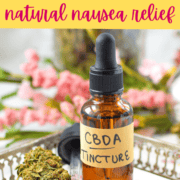








Newbie here, learning all I can. I’m about ready to make my first salve for topical use for pain. I’ve made 3 herbal oil infusions to include in the salve. Now I’m ready to do the alcohol tincture using a broad spectrum cannabis flower. I want THC, CBD, CBDA in it. Any suggestions or should I just follow the freezer method to achieve this?
Sounds like you’re off to a great start! The freezer method works well for retaining cannabinoids like THC, CBD, and CBDA. Just make sure to decarb the flower first if you want active THC and CBD in your tincture. Good luck!
What if I already did decarb my cbd flower before putting it in everclear? Is it junk now? Newbie error but curious if I should throw it out at this point.
No worries! Your tincture isn’t junk — it’ll just be a CBD tincture instead of CBDA. It’s still useful and effective!
Thank you so much!! I’m VERY relieved to read this. Phew!
I’m so happy to help! Reach out anytime!
I am an esophageal cancer patient. I make and use RSO. I also am a coach for MM patients. I love your information, recipes, etc. & overall positive honest approach to MM.
Thank you soo much for all you do snd continue to do in supporting MM.
Thank you!♥️
Hi there Chardele, your message truly warmed my heart! 😊 I’m so glad to hear that you’ve found value in the information and recipes shared. Your strength, resilience, and commitment to helping others as a coach are truly inspiring. Thank you for being part of our community and for your kind words. Stay strong and keep shining your light!
What is the benefit of freezing the plant material and the alcohol? I never heard of doing this before.
Hello Roseanne, I have a complete guide that outlines the benefit of the process here. I hope this helps!
I followed your recipe on your to make a tincture for gummies. I used it on some store bought gummies. I waited over one hour after consuming 2 gummies with no effects at all. What could i be doing wrong? It was a higher potency THC flower to begin with.
Hi Carrie. There are a couple things that can play a role in this. Do you know the final strength of your tincture? You may not have added enough to the gummies to meet your required dose. You may require more than two gummies. Did you decarb your flower first? With decarbing, you won’t feel the intoxicating effects of THC. I hope this helps.
I refer to your site often to learn as much as I can about Cannabis. Thank you for all the information.
I’ve read your recipe on how to extract the CBDA from the plant material. But what do I do next to turn it into a sublingual tincture?
Many thanks!
Hello Markie, thanks so much for the kind words, I’m glad you enjoy the website! The next step would be to evaporate the alcohol you can follow the advice in this guide here, just be sure to follow the no-heat method so that you don’t decarb the CBDA in the process 🙂